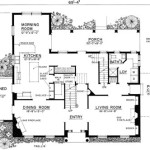Essential Aspects of Drawing Up House Plans
Creating house plans is a crucial step in the construction process, as they serve as the blueprint for your dream home. Whether you're a seasoned builder or a first-time homeowner, understanding the essential aspects of drawing up house plans is paramount.
1. Determine Your Needs and Preferences
Before putting pen to paper, it's essential to define your specific needs and preferences. Consider the number of bedrooms and bathrooms required, the desired size and layout of the rooms, and any unique features you envision, such as a home office or entertainment area.
2. Choose the Right Site
The location of your home significantly impacts its design and functionality. Factors to consider include the size and shape of the lot, access to utilities, and the orientation of the house to natural light and prevailing winds.
3. Establish a Budget
Setting a realistic budget upfront is crucial to avoid costly surprises down the road. Factor in the costs of materials, labor, permits, and professional fees when determining your budget.
4. Hire a Qualified Architect or Designer
Professional architects or designers can help you translate your vision into a functional and aesthetically pleasing plan. They possess technical expertise, knowledge of building codes, and an eye for design. Look for professionals who have experience in your preferred architectural style and budget range.
5. Develop a Sketch
Start by creating a rough sketch of your house plan. This includes outlining the main rooms, their approximate sizes, and the flow between them. Use graph paper or digital drafting software for precision.
6. Refine the Design
Once you have a basic sketch, it's time to细化设计. Work with your architect or designer to finalize the layout, optimize space usage, and incorporate any specific features or details.
7. Obtain Permits
Before construction can begin, you must obtain building permits from your local authorities. This process typically involves submitting your house plans for review and approval. Ensure that your plans adhere to all applicable building codes and zoning regulations.
8. Consider Sustainability
Incorporating sustainable design principles into your house plans can save energy, reduce environmental impact, and increase your home's value. Consider using energy-efficient appliances, employing passive solar design, and installing water-saving fixtures.
Conclusion
Drawing up house plans is a multifaceted process that requires careful planning and attention to detail. By incorporating the essential aspects outlined above, you can create a functional, aesthetically pleasing, and budget-friendly home that meets your unique needs and preferences.

Drawing Up Floor Plans Dreaming About Changes Young House Love

Make Your Own Blueprint How To Draw Floor Plans

Floor Plan Creator And Designer Free Easy App

Make Your Own Blueprint How To Draw Floor Plans

House Plans How To Design Your Home Plan

Blueprints Disney Up House Pixar

House Plans How To Design Your Home Plan

House Plans How To Design Your Home Plan

House Plans How To Design Your Home Plan

Make Your Own Blueprint How To Draw Floor Plans
Related Posts








